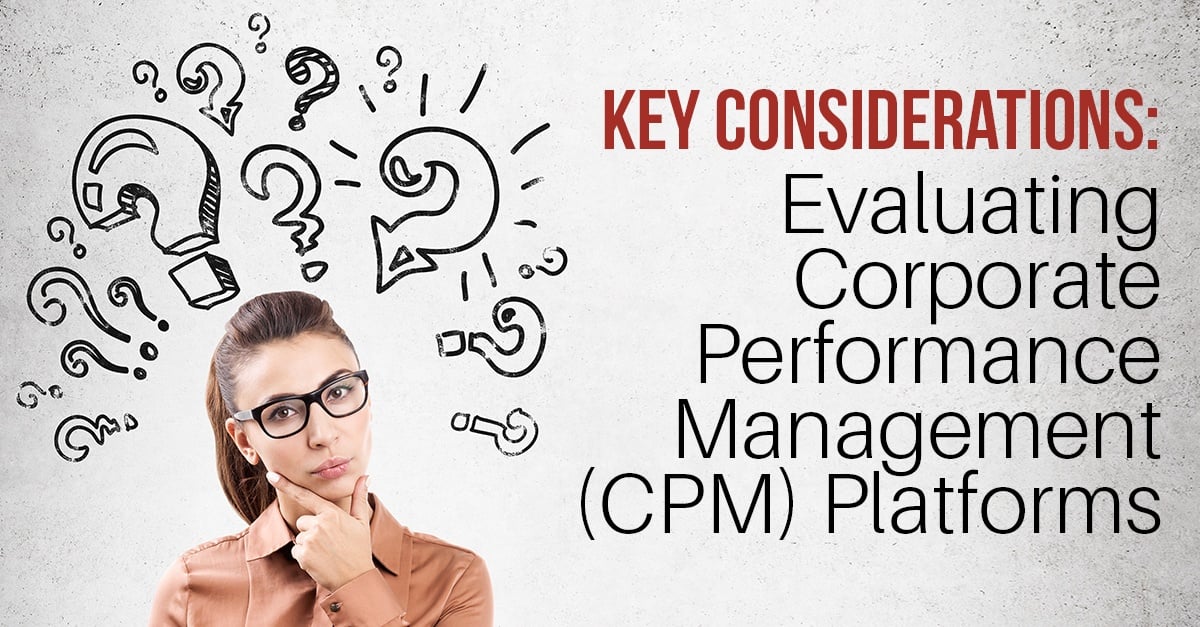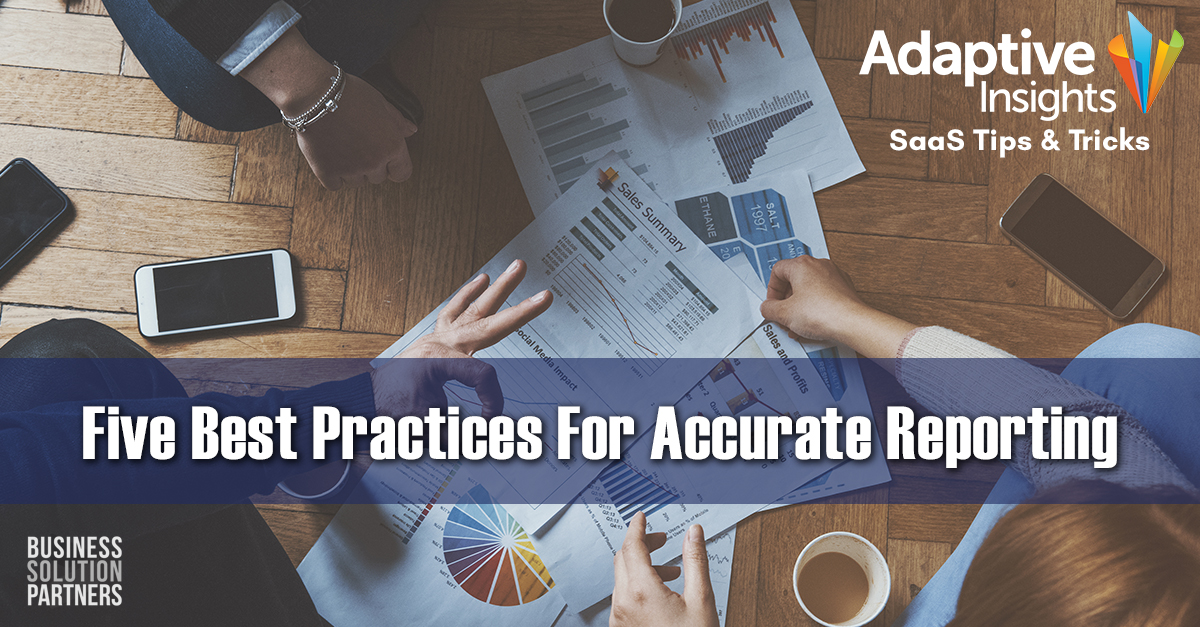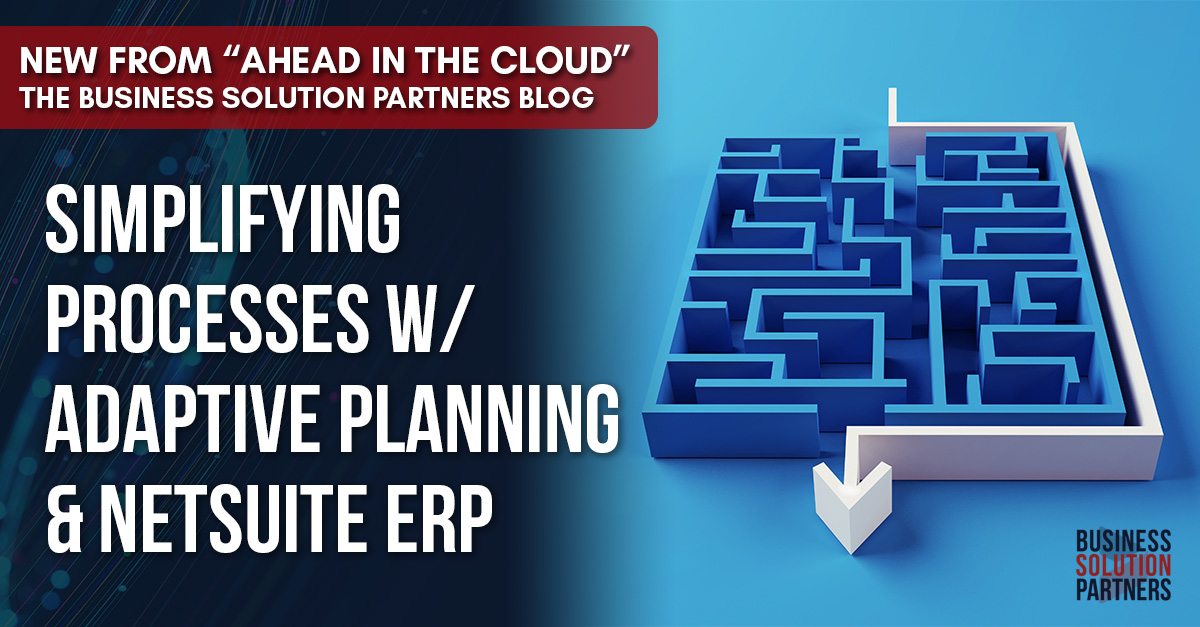Adaptive Insights: Five Best Practices For Accurate Reporting
Are you struggling to create reports that reference the right data from your Corporate Performance Management solution? Perhaps your custom queries...
2 min read
 Craig Cook
:
Jun 7, 2018 12:18:00 PM
Craig Cook
:
Jun 7, 2018 12:18:00 PM

Your financial planning and analysis (FP&A) team has finally gotten the green light to move beyond Excel spreadsheets and improve FP&A by implementing a modern software solution. The good news? There’s are plenty to choose from.
But with so many options on the marketplace, how are you going to going to determine which platform is the right solution for the unique needs of your business?
One of the first things to consider is nomenclature. The services and features that meet your company's needs will likely be found in several "different" categories of FP&A solutions including, among others...
Regardless of which category a particular software (or set of software solutions) may fall under, the key to finding the right solution is having a clear understanding of the needs of your organization. By taking the time to establish which tools and functions will team will need in order to achieve quarterly, annual, or other goals prior to starting the software and solution vetting process can make all the difference.
Once your organization's unique needs, requirements, and specifications have been established, you're ready to begin examining potential solutions. Here's our list of the most important considerations to make when evaluating a Corporate Performance Management platform:
Like the the names suggest, the primary difference between a cloud-based and and on-premise CPM solution is that...
Along with the differences in hosting, accessibility, and security that come with each - cost can often be one of the most significant factors when choosing a CPM system.
Generally speaking, many of today's cloud-based solutions are subscription based and require a smaller "up front" cost (which usually relegates the associated cost to an organization's annual operating budget).
Conversely, most on-premise solutions are purchased for a one-time licensing fee, owned out right, and demand a larger "up front" cost (usually relegating them and any associated expenses to the realm of on-time capital expenditures). With on-premise solutions, it's not on common to see factors like organization size and number of users/licenses influence final pricing.
Other valuable elements to consider when vetting either kind of solution include customization, implementation time, technology requirements, and user accessibility.
Every CPM platform will bring with it a set of functions and capabilities. Like we mentioned earlier, the process of comparing potential solutions based on functionality can be simplified and streamlined by taking the time to predetermine your organization's "must have" requirements.
In working with clients, our team has seen the following functions prove most popular and most valuable time and again:
Whether your organization is specifically searching for a single software solution or a multi-platform approach, it's important to consider a diverse spectrum of tools and capabilities when evaluating potential options.
Given the increasingly strategic and significant role that FP&A teams are playing in the executive decision making process, having a powerful suite of reporting tools has never been more important.
An ideal modern CPM solution can (and should) offer:
Evaluating CPM options based on the three aspects we’ve identified will help make sure your organization ends up with the right CPM solution to better support critical FP&A processes.

Are you struggling to create reports that reference the right data from your Corporate Performance Management solution? Perhaps your custom queries...

Simplifying and streamlining business processes is crucial for any organization's success. Combining Workday Adaptive Planning and NetSuite ERP can...

Does your pharmaceutical company have an eye on growing internationally? By 2020, the worldwide pharmaceutical industry is expected to be valued at...